How many people on Earth need to be vaccinated to achieve “herd immunity”? Why is it said that global vaccine distribution and vaccination are "seriously unbalanced and unfair"? What is the status of vaccine distribution and vaccination in low- and middle-income countries?
Total words2363About6minutes
Author: Zeng Lu
The COVID-19 epidemic has infected 120 million people worldwide, killed 2.57 million people, and plunged the global economy into the most serious downturn in decades.
How many people need to be vaccinated to achieve “herd immunity”?
"Herd immunity" refers to a sufficient proportion of the population acquiring immunity to an infectious disease through vaccination or previous infection, thereby reducing the spread of the epidemic from person to person. The scientific community has yet to reach a consensus on the vaccination ratio that produces "herd immunity" for COVID-19. Most infectious disease experts believe that the vaccination ratio should reach 60% to 90% of the population.

How many vaccines have been approved for marketing? What is the production capacity in 2021?
Twelve vaccines have been approved for marketing around the world, including the United States (Pfizer, Moderna, Johnson & Johnson), Germany, the United Kingdom (AstraZeneca), Russia (Gammalia Institute, Vector Research Center), China (Sinopharm, Sinovac) , CanSino) and Indian (Bharat) pharmaceutical companies, most vaccines require two doses.
In 2021, the global vaccine production capacity on the market is expected to reach 8.5 billion doses. As more vaccines are approved, vaccine production capacity by the end of the year is expected to increase significantly. China's vaccine production capacity is expected to exceed 2 billion doses this year.
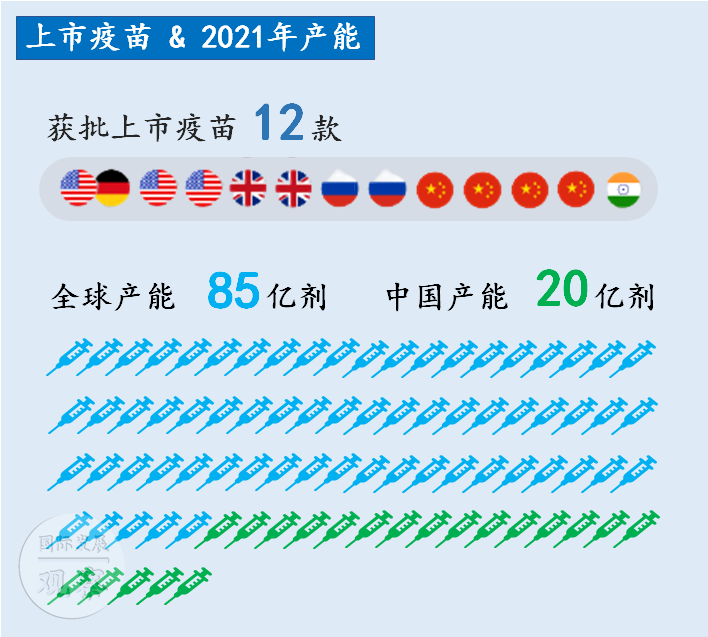
Why is global vaccine distribution said to be "seriously unbalanced and unfair"?
Why is global vaccine distribution said to be "seriously unbalanced and unfair"? Developed countries have reserved most of the world’s vaccines.Insufficient production capacity has triggered a battle for vaccines. "Rich countries accounting for 16% of the world's population have purchased 60% of the global vaccine supply." The United States, the European Union, the United Kingdom, Canada and other countries have booked vaccines with pharmaceutical companies that are several times their own population. Developed countries have purchased the most vaccines from AstraZeneca, Novavax and Pfizer.
Vaccine procurement in low- and middle-income countries is seriously lagging behind.COVAX ("COVID-19 Vaccine Implementation Plan"), which aims to ensure fair and equitable access to vaccines for low- and middle-income countries, plans to provide 200 million doses of vaccines to 92 countries in 2021, with shipments following those of developed countries. Middle-income countries are actively raising vaccines from multiple channels, while least developed countries and small countries are passive in the fight for vaccines. Vaccines from Sinovac, Sinopharm and Gamaleya Research Institute are welcomed by developing countries.
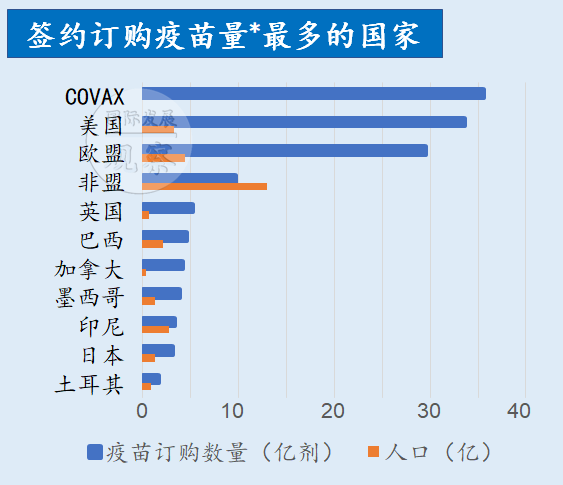
Figure 3: International Development Watch based on UNICEF COVID-19 Vaccine Market Dashboard data
Many countries have launched large-scale vaccinations, and developing countries are waiting for vaccines
More than 300 million doses of vaccine have been administered globally. Developed countries and some middle-income countries have carried out large-scale vaccination. The United States leads the total vaccination of various countries with 80.54 million doses, followed by China and the European Union.
Israel has vaccinated 92.51% of its population, followed by the Seychelles and the UK. According to the Ministry of Health, the effectiveness of two doses of the Pfizer vaccine in preventing infection is as high as 95.8%. The WHO announced in mid-February that new confirmed cases and deaths were on a downward trend globally, with the largest declines in Europe and the Americas.
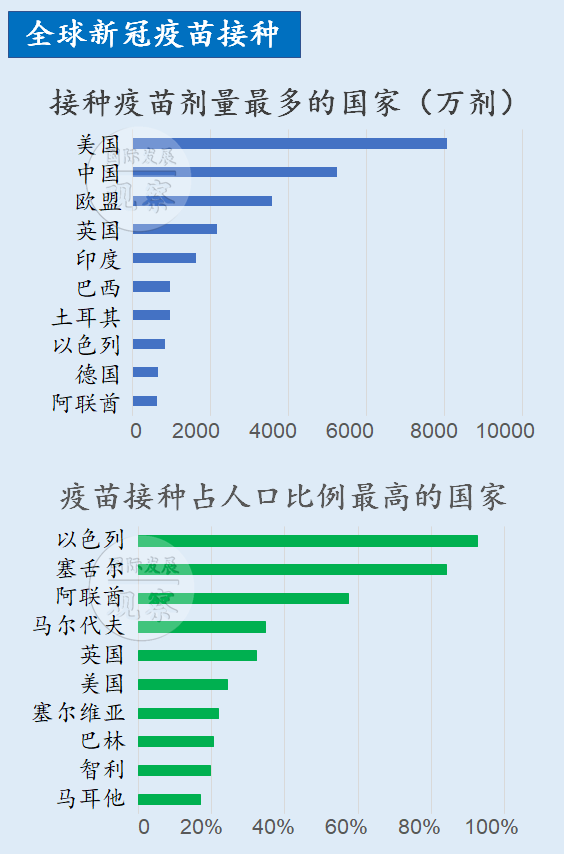
The African Union has set a vaccination target for Africa of 60% of the population (about 1.5 billion doses). Data from the Africa Centers for Disease Control and Prevention in February shows that most African countries have only ordered enough vaccines to cover 5% to 10% of the population (not counting COVAX).
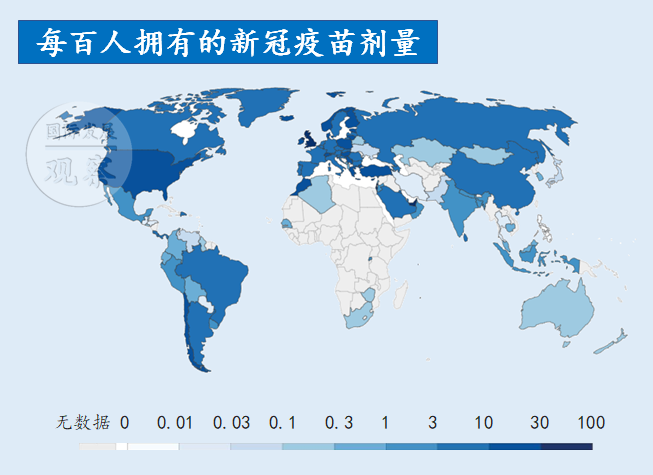
The international community extends a helping hand to low- and middle-income countries
As more vaccines are approved for marketing, vaccine supply in developing countries is beginning to see hope. The African Union has reserved a total of 970 million doses of vaccines for its member states, and the international community has also extended a helping hand. More and more African countries will start vaccination in the near future.
On the basis of donation commitments from the European Union, the Gates Foundation and others, the Group of Seven pledged on February 19 to donate US$4.3 billion to COVAX in 2021 to support the detection and treatment of global epidemics, as well as vaccine development and equitable distribution. Among them, the United States has pledged to donate US$2 billion and will provide another US$2 billion by 2023. At this point, COVAX’s cumulative pledged contributions have reached US$10.3 billion. In addition, the United Kingdom, Canada, France, Norway and the European Union have successively pledged to share excess vaccines with developing countries.
On February 24, COVAX delivered 600,000 doses of AstraZeneca vaccine to Ghana for the first time, marking the smooth entry of the plan into the implementation phase. Cote d'Ivoire, Nigeria and other countries have also recently received vaccines delivered by COVAX.
China has provided vaccine assistance to more than 60 developing countries, provided 10 million doses of vaccines to COVAX, and exported vaccines to 22 countries. Russia, India and other countries also provide vaccines to developing countries through bilateral assistance or low-price sales.
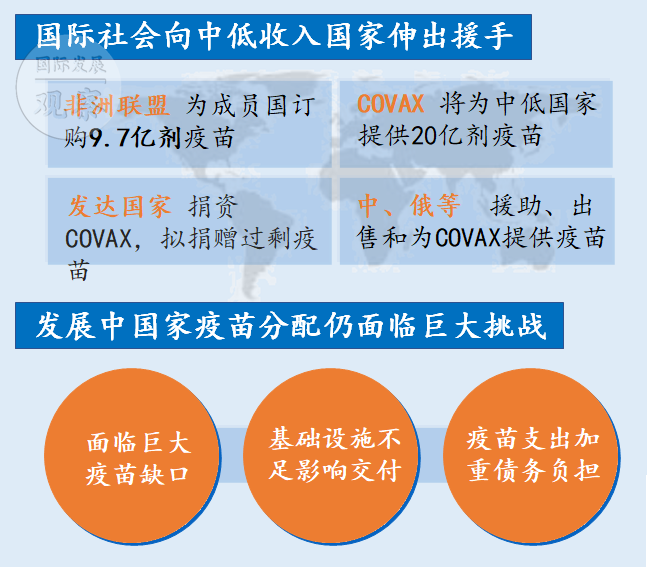
Vaccine distribution in developing countries still faces huge challenges
Developing countries still face huge vaccine gaps. Support from the international community has alleviated the vaccine crisis in developing countries to a certain extent, but the gap is still huge. Taking Africa as an example, the vaccines scheduled by the African Union are far from enough to cover 60% of the African population, and some funds have not yet been implemented. The vaccines COVAX plans to provide in the first half of 2021 are only enough to protect 31% of the African population, and its follow-up work still faces a funding gap of US$22.9 billion.
Insufficient infrastructure such as logistics affects vaccine delivery. Vaccines have strict requirements for storage temperature, and the Pfizer vaccine even needs to be stored at minus 70°C. Therefore, qualified cold storage facilities are required for the manufacture, transportation, and use of vaccines. However, only a few developing countries have cold chain storage and transportation systems. In addition, it is also necessary to overcome challenges such as travel restrictions and airline groundings during the epidemic and coordinate the smooth delivery of vaccines by airlines.
Procuring and delivering vaccines increases the debt burden of low- and middle-income countries. The AU needs to pay approximately US$9 billion for vaccine procurement and delivery to achieve the 60% immunity target. The WHO stated that only about a quarter of African countries have sufficient funds to support vaccination. Although the African Export-Import Bank and the World Bank have provided concessional loans of US$2 billion and US$12 billion to Africa respectively, related loans and expenditures will further increase the soaring debt burden of developing countries such as Africa due to the epidemic.
The data in this article was updated on March 5, 2021
This article was first published on the WeChat public account "International Development Observation". All rights reserved, please indicate the author and source when reprinting.
References:
www.ourworldindata.org/coronavirus
https://www.unicef.org/supply/stories/getting-covid-19-vaccines-west-and-central-africa
https://edition.cnn.com/2021/02/05/africa/vaccine-race-africa-intl/index.html (Africa vaccine map)
https://www.france24.com/en/africa/20210111-where-does-africa-stand-in-the-covid-19-vaccine-race
https://www.bmj.com/content/372/bmj.n567
https://news.cctv.com/2021/02/20/ARTIcSL4qCiGschYShFsQNHy210220.shtml
https://www.statista.com/statistics/1194939/rate-covid-vaccination-by-county-worldwide/
Past review
- Is COVID-19 the Final Straw for Triggering Debt Crisis in Developing Countries?
- Joining the Global COVID-19 Vaccine Initiative: A Win-Win for China and the World
- The International Implications of Biden's Development Cooperation Policy
- Recapping International Development in 2020
- How to do better international anti-epidemic assistance

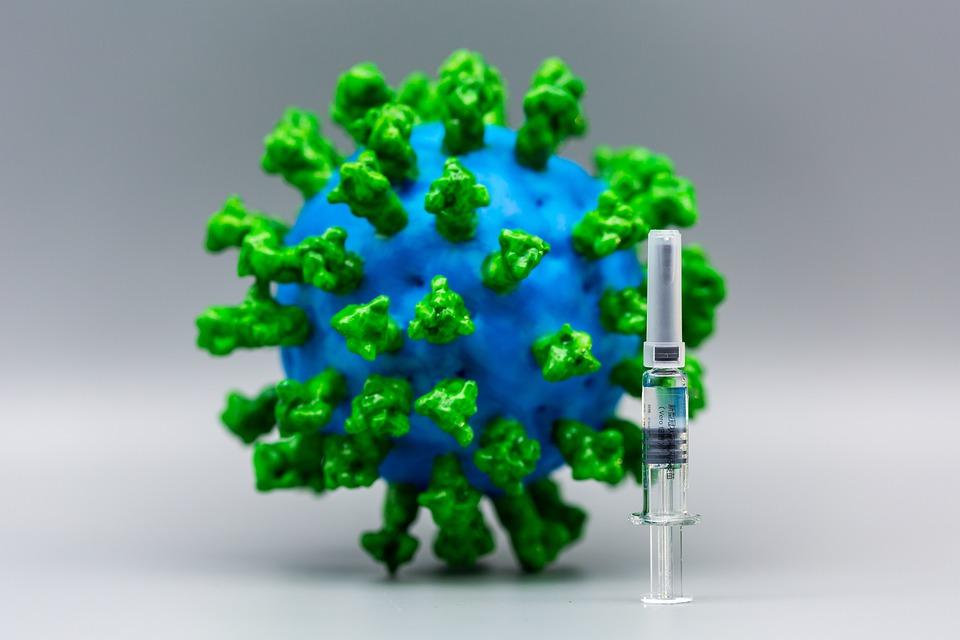
Comment (1)
Qiuqiu| March 25, 2021
The picture is well done, concise and clear.